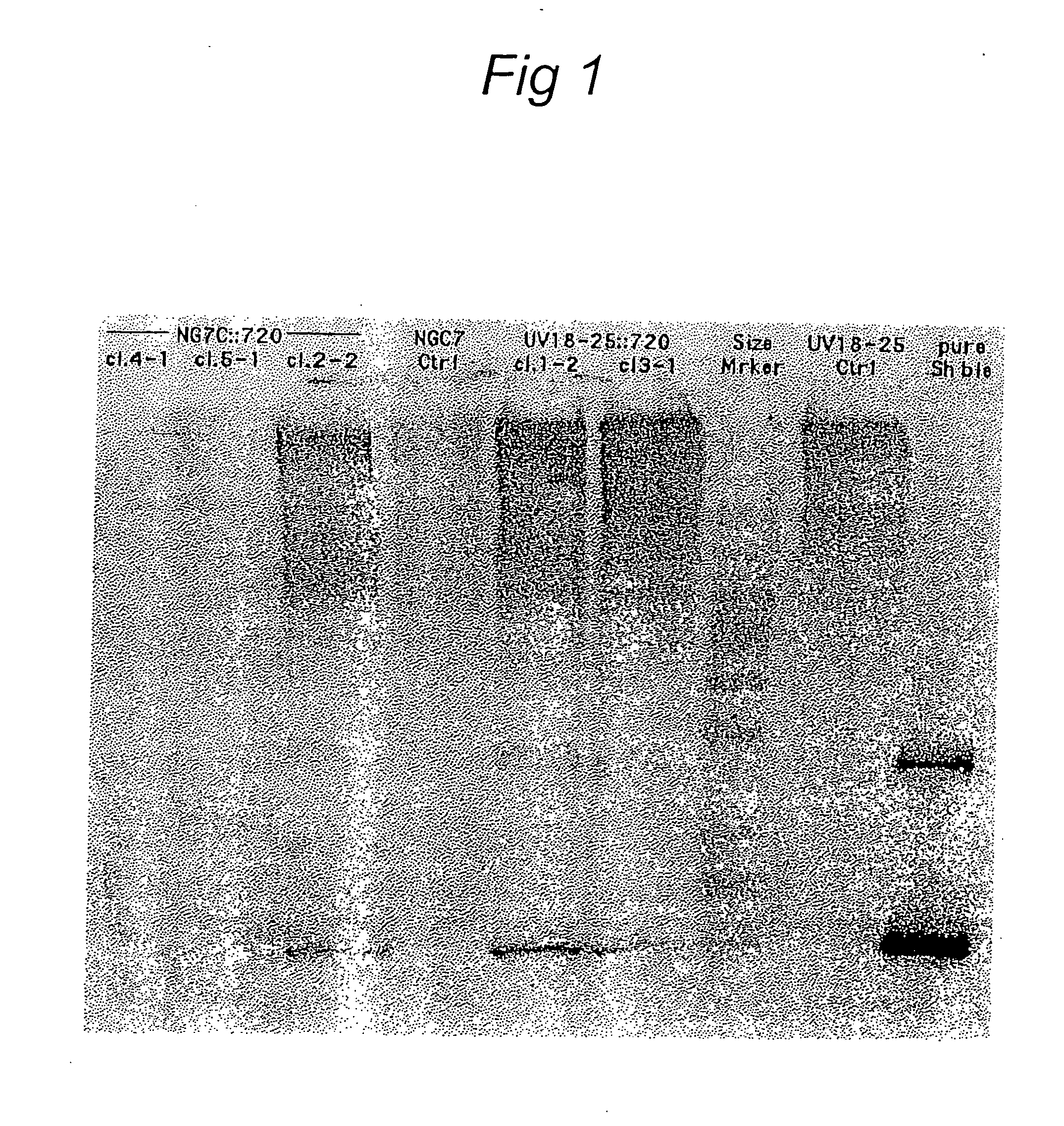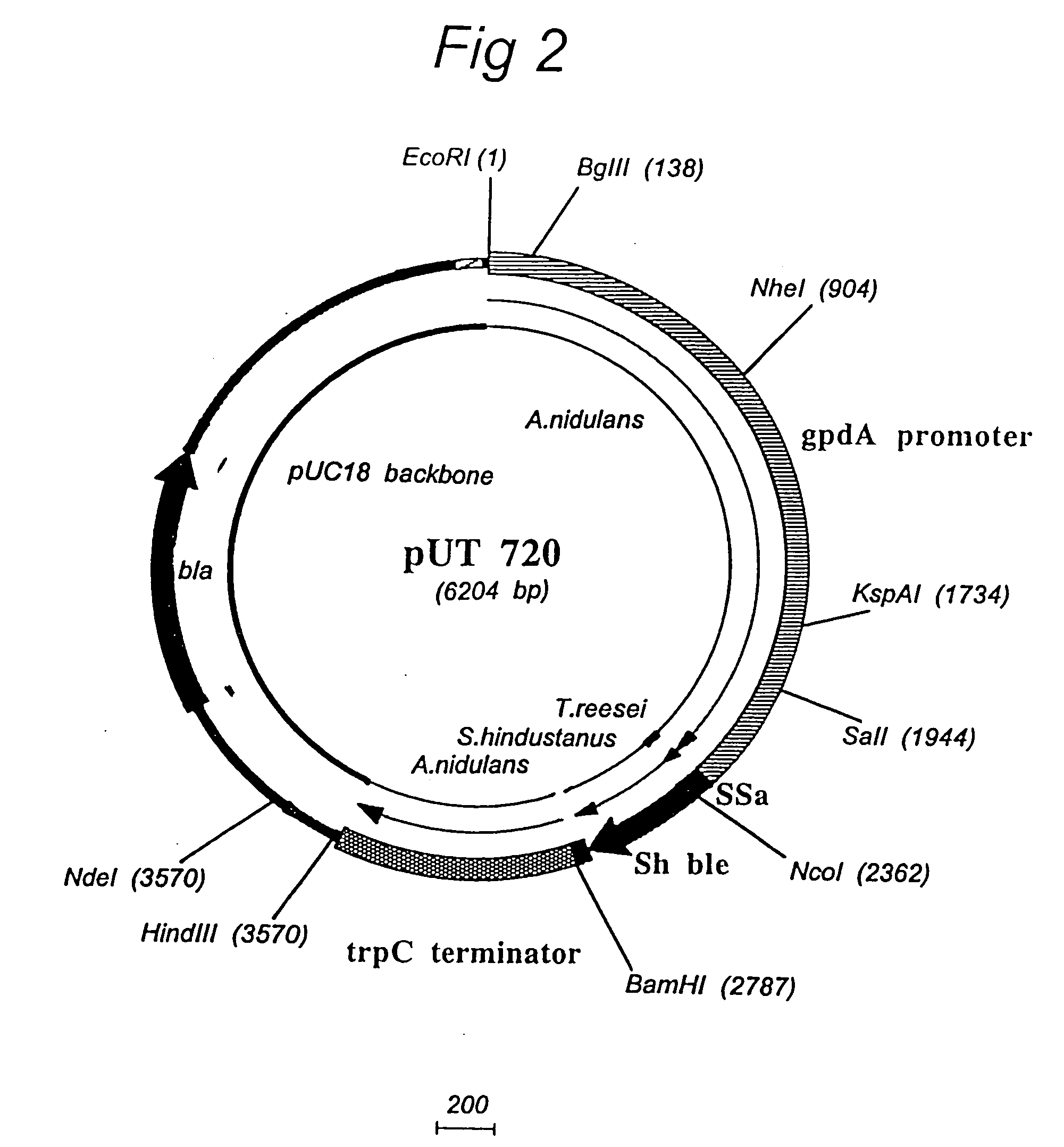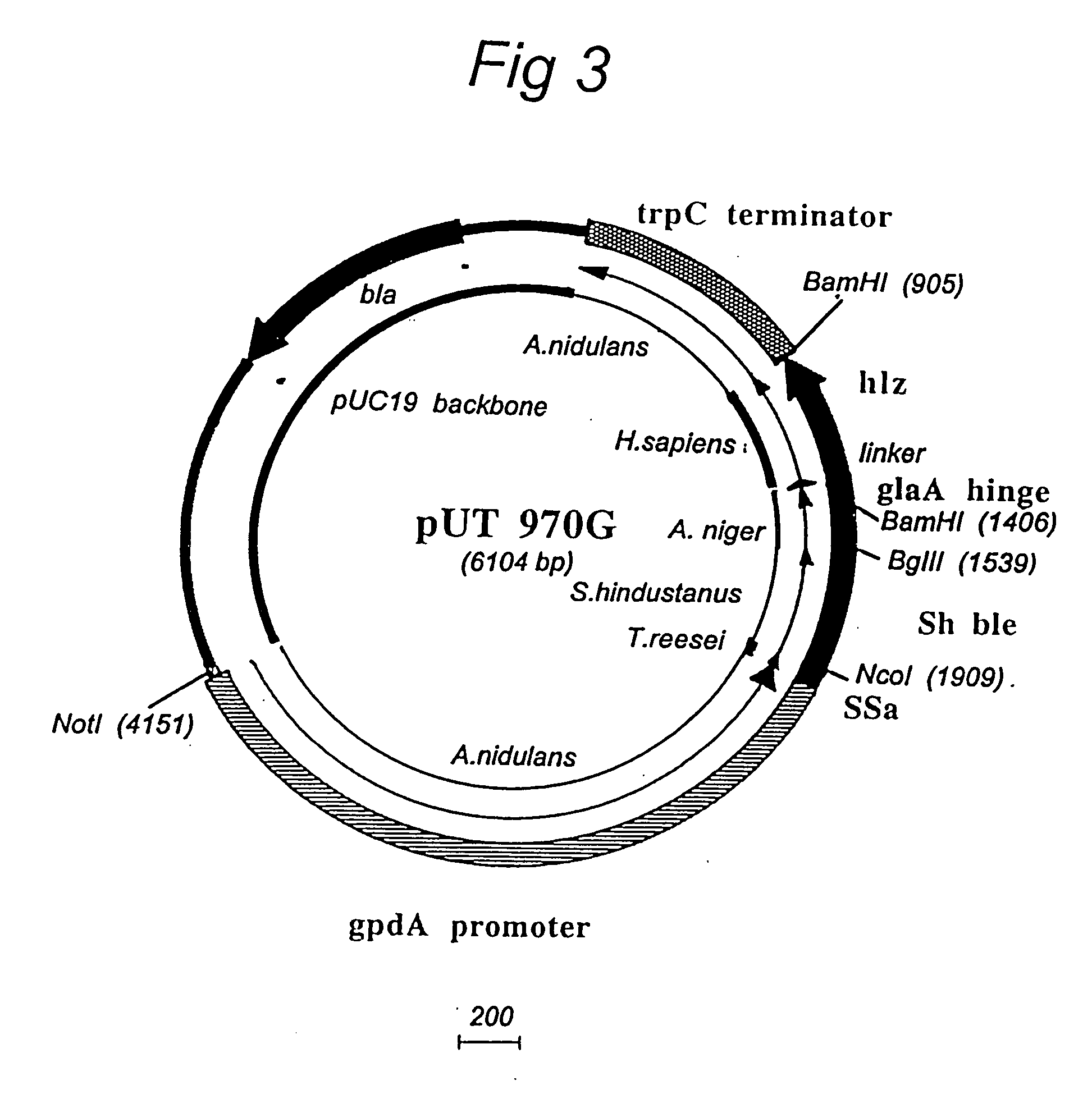High-throughput screening of expressed DNA libraries in filamentous fungi
a technology of expressed dna and filamentous fungi, which is applied in the field of high-throughput screening of expressed dna libraries in filamentous fungi, can solve the problems of not being able to effectively express i>e. coli /i>genes having introns, large number of potentially valuable proteins, and inability to describe or enable, etc., to achieve low culture viscosity, reduce the formation of entangled mycelia, and the effect of reducing
- Summary
- Abstract
- Description
- Claims
- Application Information
AI Technical Summary
Benefits of technology
Problems solved by technology
Method used
Image
Examples
examples
A. Development of Compact Growth Morphology Mutants
[0138] Various patent applications teach that morphological mutants can be isolated by various ways of screening. WO 96 / 02653 and WO 97 / 26330 describe non-defined mutants exhibiting compact morphology. It was found that a proprotein processing mutant of A. sojae had an unexpected aberrant growth phenotype (hyper-branching) while no detrimental effect on protein production were observed. Culture experiments with this strain revealed a very compact growth phenotype with micropellets. The observed characteristics were not only present in A. sojae but other mutated fungi as well, e.g. A. niger.
[0139] (1) Construction of an A. niger Proprotein Processing Mutant
[0140] To clone the proprotein convertase encoding gene from A. niger, PCR was used. Based on the comparison of various proprotein convertase genes from various yeast species and higher eukaryotes, different PCR primers were designed which are degenerated, respectively, 4, 2, 2...
PUM
| Property | Measurement | Unit |
|---|---|---|
| viscosity | aaaaa | aaaaa |
| viscosity | aaaaa | aaaaa |
| viscosity | aaaaa | aaaaa |
Abstract
Description
Claims
Application Information
 Login to View More
Login to View More - R&D
- Intellectual Property
- Life Sciences
- Materials
- Tech Scout
- Unparalleled Data Quality
- Higher Quality Content
- 60% Fewer Hallucinations
Browse by: Latest US Patents, China's latest patents, Technical Efficacy Thesaurus, Application Domain, Technology Topic, Popular Technical Reports.
© 2025 PatSnap. All rights reserved.Legal|Privacy policy|Modern Slavery Act Transparency Statement|Sitemap|About US| Contact US: help@patsnap.com



